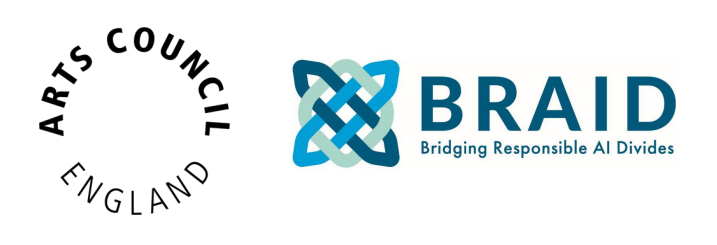
Responsible AI Practical Toolkit
Responsible AI Practical Toolkit
By
Arts Council England
There is no single “one-size-fits-all” AI policy. In fact, developing an AI policy is more about people than technology. It should reflect your organisation’s values, how much risk you’re willing to take, and the sector you work in. Arts Council England have created seven guides to help you take a thoughtful and collaborative approach to building AI policies and practices that match your organisation’s purpose.
These resources were created over a twelve-month research and development period at Arts Council England. They offer a framework to help creative and cultural organisations that want to create their own Responsible AI policies and practices.
Starting the AI Conversation
The pressure to develop an ‘AI Policy’ can make you feel rushed to adopt a document. Our experience shows that starting a conversation and developing a values-led approach that takes a broader view and outlines the scope of an AI strategy can create a solid foundation for longer term digital transformation.
This worksheet will help you to gain the data and insights needed to develop an AI strategy. Digital transformation is not a single document or project. Instead, it is important to think about the impact of these technologies from an organisational change perspective.
E-text, accessible and editable
Internal stakeholder mapping
AI projects involve many different people and teams across an organisation, so it is important to map
out who the project directly impacts and who has expertise that can help shape the project. Whilst it is
important to keep your whole organisation informed about digital transformation projects, the goal of this worksheet is to help you to think about everyone involved, interested and influential for your project, so that you can develop a strategic engagement plan to involve key stakeholders.
E-text, accessible and editable
Developing an AI Policy
An AI Policy is an essential governing document to mitigate legal and reputational risk in any organisation that is actively using AI technologies. Alongside managing risk, a well written and widely utilised policy also champions best practice and supports the adoption of technologies and workflows that can support an organisation to deliver on its mission and vision.
E-text, accessible and editable
Risk List
A simple guide to developing a colour-coded (traffic light) risk list.
E-text, accessible and editable
Responsible AI Checklist
This checklist outlines some key responsibilities to consider when initiating AI projects. The example actions are not exhaustive, and their application will differ depending on the type of organisation. They are provided as a starting point to support initial thinking.
E-text, accessible and editable
AI Pilot Project Management Template
E-text, accessible and editable
Delivering a successful AI pilot project
AI can potentially support a wealth of business areas and processes. Identifying areas where there is a genuine capacity need helps to make the pilot project more meaningful and increases the likelihood of buy-in from business leads and users.
E-text, accessible and editable
























